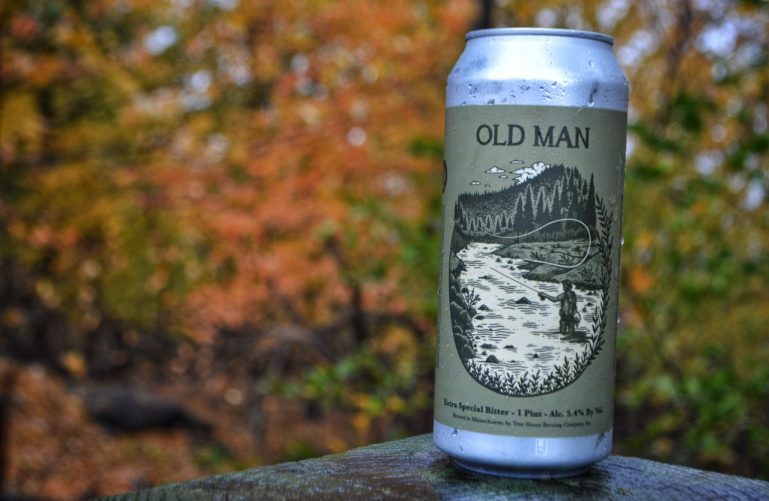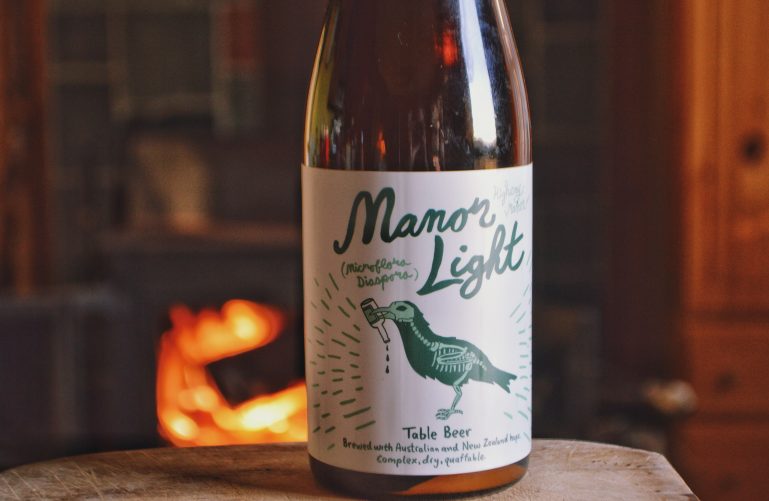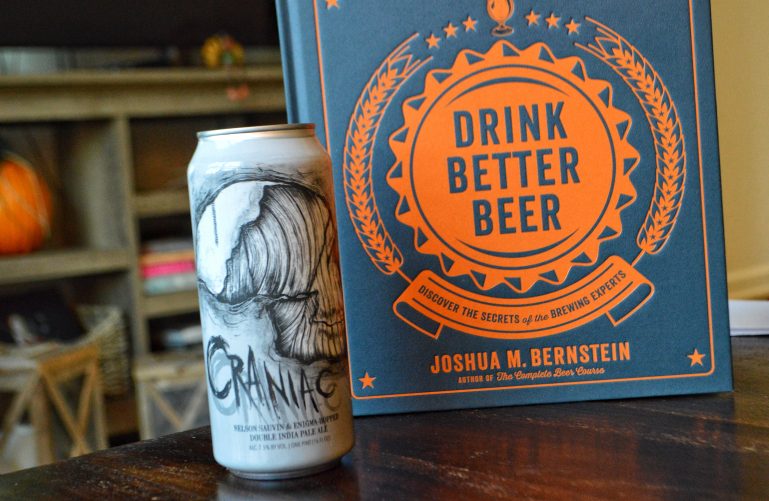Tinker Bell Takes Some Brewing Lessons: Lupulin Powder And IPAs

Picture a steady stream of gorgeous whole cone hops cascading into a boil kettle.
Landing gently in its carefully crafted wort bath, they float majestically, lending their complex and nuanced flavors to your favorite beer. It’s the type of scene that screams for a slow motion montage.
Now replace those beautiful, plump hops with small green pellets that look like rabbit food. Unremarkably plopping into their new home, they quickly disintegrate into a sludge that sinks to the bottom. Not as picturesque, huh?
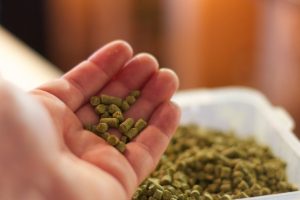
Fact is though, hop pellets tend to be the norm throughout the brewing industry. Some breweries like Sierra Nevada and Anchor Brewing pride themselves on using whole cone hops, but for the vast majority of breweries, it simply isn’t practical. Besides requiring a larger amount of hops to create hoppier beers (and taking up precious space that smaller breweries don’t have), whole cones and leaves degrade fairly quickly, can give you inconsistent results and create a huge mess. A relatively new technological development in brewing, the industrial pelletizing of hops started in the 1960s and solved many of the issues associated with whole cone hops: they have a longer shelf life, pack more punch in a smaller package, produce more predictable flavors and are much easier to deal with throughout the brewing process.
As it’s wont to do, technology has continued to march along and brewers now have a third option for their hop needs: lupulin powder.
What is lupulin powder?
In short, lupulin powder is the condensed essence of hop’s lupulin glands which contains the various resins as well as alpha and beta acids that create hops’ distinct flavors and aromas. In simpler terms, it’s hop dust. Delicious, delicious hop dust.

PubliusAelius / CC BY-SA
With traditional hop pellets, the leaves, or bracteole, along with the lupulin glands get pulverized and pressed into little nuggets of hop goodness. The downside of this process? It can deteriorate the flavor of the hops and the pellets contain a bunch of non-lupulin organic material that serve no real purpose, other than potentially creating some off-flavors. For example, some folks experience an oniony note when drinking beers brewed with Mosaic, a trait attributed to the use of the whole hops.
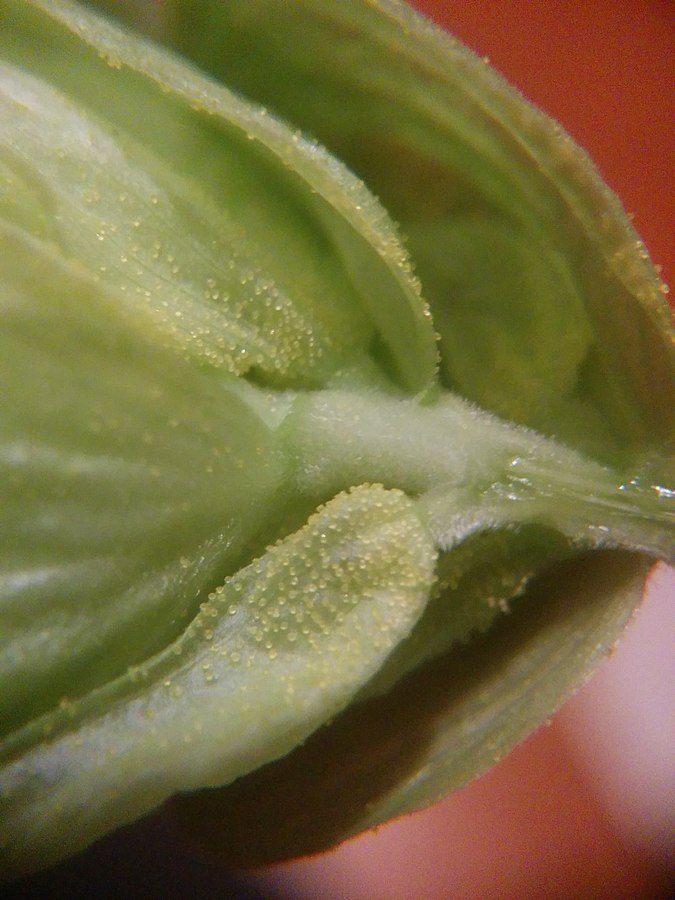
Lupulin powder, on the other hand, contains much less of the undesirable plant matter. Through a cryogenic process, lupulin is extracted from whole cone hops creating a potent hop powder. Not only does this powder pack a hop punch that reduces the amount of hops needed in a beer, it also creates more intense flavors with reduced bitterness, eliminates the possibility of off-flavor from excessive organic material and actually increases the output of each brew (hops tend to soak up beer that is never recovered). If Tinker Bell drank beer, this stuff would be her pixie dust.
As with nearly every great thing, however, lupulin powder has some downsides. Two of the biggest are its cost and limited variety. Seeing as brewers will use less powder to replicate their current results and get more beer out of the process, pricing concerns seem to be a wash. As of right now, though, only eight hop varietals can be purchased in powder form making for limited flavor profiles. In contrast, when using whole cone or pellet hops, brewers have access to about 125 different varietals, a number that doesn’t even include the steady stream of experimental hops being released every year.
Additionally, lupulin powder’s usefulness outside of hoppy beers remains to be seen. Outside of IPAs, brewers aren’t necessarily looking for a blast of hop flavor, so pellets and whole cone hops may remain the norm. And, considering the expense of the powder and popularity of IPAs, why brew anything else and risk a dud?
All of this brings us to a critical question: Is it worth the hype? Let’s take a sip and find out.
Lupulin Powder and Captain Lawrence Brewing’s ‘Powder Dreams’

I’ve previously spotlighted Captain Lawrence in a few of my blog posts and I continue to be a huge fan of their beers. They like to experiment on their pilot system, which clocks in at a humble 7 bbl (about 13 kegs), and recently they’ve been brewing some New England-style IPAs (hazy, juicy hop bombs). One of those IPAs, Powder Dreams, just so happens to be dry hopped with Mosaic lupulin powder.

Once this beer is poured, it wallops you with hop aroma: a mix between tropical fruits, pine, tangerine and grapefruit. Hazy gold, with a gorgeous, delicate head, it’s a picture perfect double IPA. The taste matches the nose note for note and speaks to the potential of lupulin powder. Subdued bitterness, thicker mouthfeel and a rush of fruit flavors creates an unmistakable juiciness. For someone not expecting the results, the first taste can be jarring. My fiance wasn’t a fan for this precise reason: it had an unmistakable juice quality that didn’t agree with her idea of an IPA. On the other hand, that was precisely what I enjoyed so much about it. There’s so much flavor packed into a sip that I couldn’t help savoring each one. And, as someone who’s mildly allergic to citrus fruits but absolutely loves them, beers like this are a godsend. All the juice flavor, without all of the annoying sweating AND 6.5% ABV? Sign me up! The only drawback is that I definitely don’t see it as a kind of beer that I would have multiples of during one sitting. However, that’s more personal preference than anything else.
Interested in doing your own taste test? A number of breweries have released lupulin dusted beers (i.e. Other Half’s Third Anniversary Imperial IPA, Trillium’s Pow Pow, Rushing Duck’s latest batch of Divided by Zero), but their novelty has meant that these releases have been in pretty high demand. This also means that you’re unlikely to find one in your favorite beer store, making a trip to a brewery a necessity.
If you’re not already following your favorite breweries social media accounts (Instagram is by far the most prevalent in the beer community), make sure to hit that follow button. Besides pictures of bearded dudes messing around with stainless steel vats, it’s the best way of keeping up to date with brewery releases if you’re not a regular visitor. This is definitely a situation in which a little bit of legwork (and possibly waiting) would be worth the hassle.
